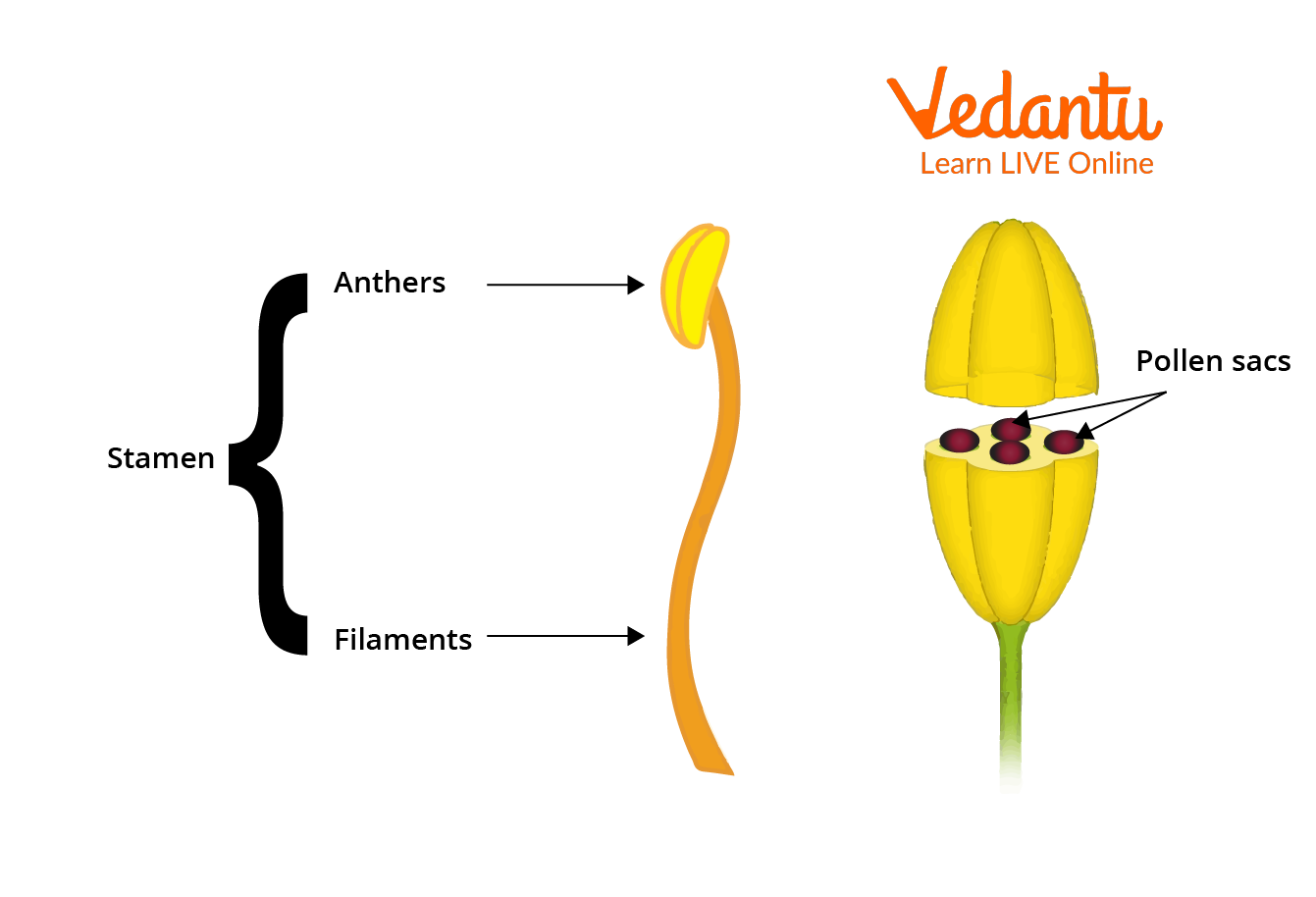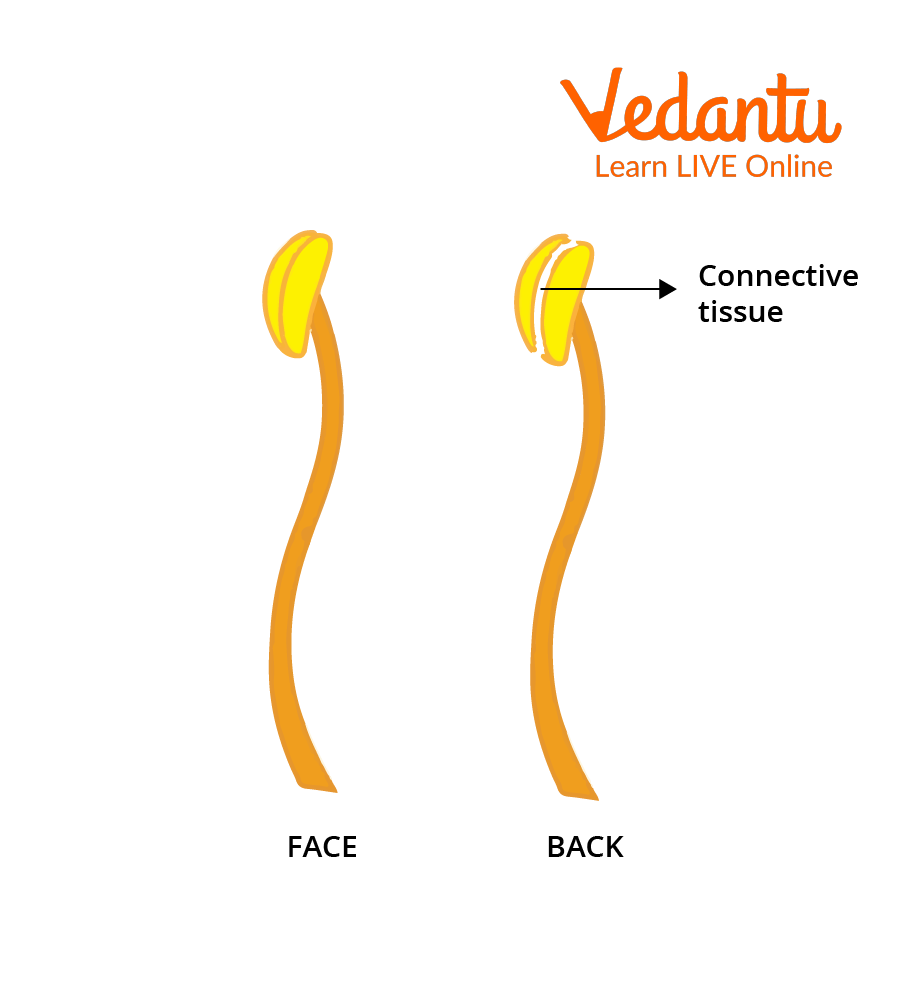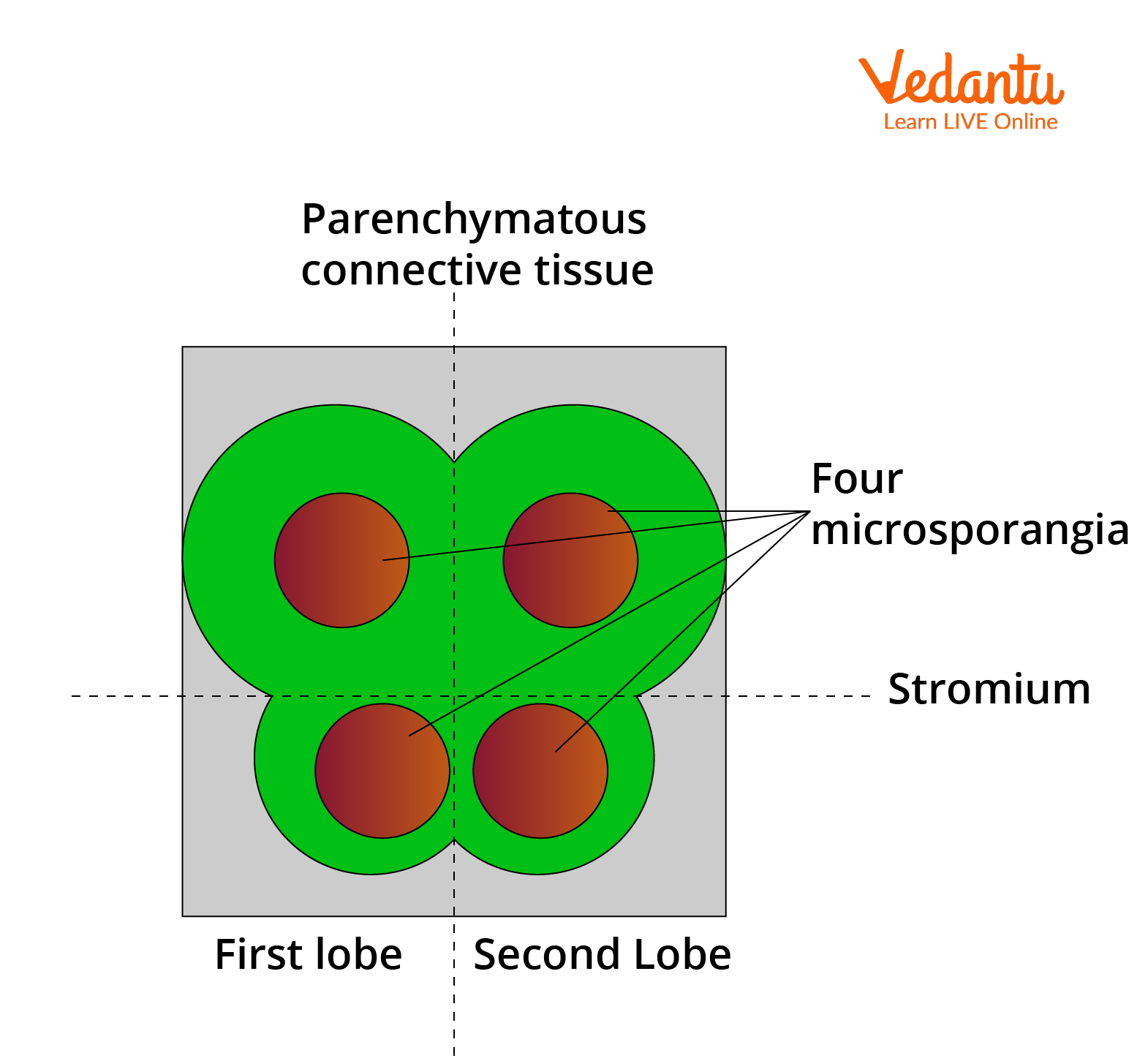Introduction to Stamen in Plants
A stamen is a reproductive structure found in flowering plants. A flower's biological function is to aid reproduction, usually by providing a mechanism for the union of sperm and eggs. Stamens are flowering plants' male reproductive organs. They are made up of an anther, which is the site of pollen development, and a stalk-like filament, which transmits water and nutrients to the anther and positions it to aid in pollen dispersal. The pistil is the female part and is typically found in the centre of the flower and consists of three parts: the stigma, style, and ovary.
In this article, we will have a look inside the male part of the flower and its structure and function.
What is Stamen?
The stamen is a flower's pollen-producing reproductive organ.
The androecium is made up of stamens.
Parts of a stamen include anther and filaments.
Anther is a yellowish sac-like structure that produces and stores pollen.
Filament is a thin, threadlike object that serves as a support for the anther.
A flower that has sepals, petals, stamens and pistils is said to be complete; a flower that lacks one or more of these structures is said to be incomplete.
Stamens and pistils are not found in all flowers. When both are present, the flower is said to be perfect, or bisexual, regardless of any other missing component.
Structure of Stamen

Structure of Stamen
Stamen structure is made up of anther and filament.
Anthers have a bilobed structure that transports pollen grains in pollen sacs.
Connective tissue connects both lobes of the anther.
A stamen filament emerges from the thalamus or peduncle, giving rise to a knob-like anther.
Anther shapes are differently portrayed by terms. For example: linear, rounded, sagittate, twisted or reniform.
Each lobe contains two thecae, indicating that an anther is dithecous.

External View of Anther
The internal structure of the anther has four chambers, which are separated by an external longitudinal groove called the stromium.

Internal Structure of Anther
The filament is the thin stalk that upholds the anther in the male part of the flower.
Filament carries the nutrients to the anther for pollen development.
Functions of Stamen
The primary capability of the stamen of a flower is to deliver the pollen grains, which house male gametes, or sex cells and are fundamental for a generation.
The anther is situated inside the stamen where these gametes are made.
Pollen grains fluctuate in size, shape and surface designs in view of the sort of flower that produces them.
Most pollen grains are round or oval and are exceptionally little.
The filament might be considered as only a straightforward tail. It has a vital capability.
The filament is liable for getting the pollen-bearing anther near the highest point of the pistil as conceivable on the grounds that here, pollen will be moved to the female conceiving organ.
The filament is ordinarily tall, and there are a significant number of them planned in a circle around the pistil to improve the probability of pollen transfer.
Types of Stamen
Polyandrous: In this kind, the filaments are not combined, they are free. Example: Lotus and Rose.
Monadelphous: In this condition, anthers are free and filaments are fused. Example: China Rose.
Diadelphous: Here, anthers are free but the filaments are fused in groups of two. Example: Pea.
Polyadelphous: Here anthers are still free, but the filaments are grouped together in more than two groups. Example: Citrus plants.
Syngenesious: Here, filaments are free and anthers are fused. Example: Marigold and Sunflower.
Synandrous: In this condition, all the anthers and filaments are fused together. Example: Cucurbita.
Some Terminologies Related to Stamen
On the Basis of Their Length
Didymous: Both the lengths are the same.
Didynamous: When they occur in two sets of a long pair and a short pair.
Tetradynamous: When they are present as a bunch of six stamens with four long and two short ones.
On the Basis of the Attachment of Anther and Filaments
Basifixed: It is the condition in which filaments are attached to the base of the anther.
Dorsifixed: In this condition, the filament is arranged on only the dorsal side of the anther.
Adnate: In this condition, filament runs through the whole length of the anther, from the base to the top.
Adaptable: In this condition, the filament is only attached to the middle of the anther.
Conclusion
The name of the stamen comes from the Latin word stare, which means "to stand." In ancient Rome, stamen also referred to the warp or thread of an upright loom. Flowers have more stamen than pistils because they produce billions of grains of pollen, the majority of which will never reach another plant's pistil.
The stamens structure the whorl just inside the corolla. Every stamen has a thin tail, or filament, at the highest point of which is an anther, the pollen-bearing organ. The whorl or gathering of stamens is known as the androecium, and this comprises the male piece of the flower. Floral parts of the plant and morphology of the plant cover a large portion of the examination, and the terminologies related to the stamen are also asked by the examiner frequently.


FAQs on Stamen
1. What is the difference between pistil and stamen?
Stamen | Pistil |
It is the male reproductive part of the plant. | It is the female reproductive part of the plant. |
It consists of two parts: anther and filament. | It consists of three parts: stigma, style and ovary. |
It produces pollen grains. | It produces ovules. |
It is also known as Androecium. | It is known as Gynoecium. |
It releases pollen grains into the environment. | The stigma receives the pollen grains. |
It doesn’t form pollen tubes. | It forms the pollen tube. |
Pollen grains germinate to produce male gametes. | It has an embryo sac which possesses the eggs and represents the female gametes. |
2. What is the structure of a pollen grain?
The Structure of a Pollen Grain Includes:
The pollen grain is encircled by two layers are exine, which shapes the external layer and intine, which frames the inward layer.
The generative cell divides to form two male gametes.
The vegetative cell provides nourishment.
The intine layer emerges from the microorganism pore to shape the dust tube.
The inside part of pollen grain contains cytoplasm alongside the tube cell, which changes over into a pollen tube and the generative cell delivers the male gametes.
3. What do you mean by pollination?
Pollination is the transfer of pollen from an anther (male part) of a plant to the stigma (female part) of a plant, allowing fertilisation and seed production, most commonly by an animal or by the wind. Animals such as insects, birds, and bats, as well as water, wind can act as pollinators. Even plants themselves can act as pollinators when self-pollination occurs within a closed flower. Within a species, pollination is common. In nature and in plant breeding, pollination between species can result in hybrid offspring.










